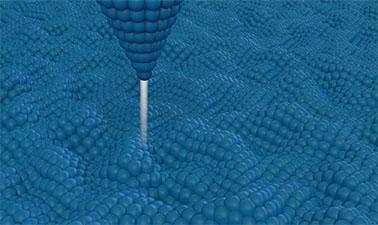MOOC List is learner-supported. When you buy through links on our site, we may earn an affiliate commission.

MOOC List is learner-supported. When you buy through links on our site, we may earn an affiliate commission.
This course describes the most widely used analysis methods in contemporary surface science. It presents the strengths and weaknesses of each method so that you can choose the one that provides you with the information you need. It also reviews what each method cannot give to you, as well as how to interpret the results obtained from each method.
This course is filled with examples to help you become familiar with the graphs and figures obtained from common surface analysis methods.
Each method is described in a similar way: basic principle, apparatus scheme, example results, special features, and actual device examples.
What you'll learn
- The information each method can and cannot give
- Applications which are best for each method
- Errors or uncertainties that might arise by using each method
- Special features of each method
- Sample preparation procedures required for each method
Syllabus
1. Introduction
• Introduction
2. Corpuscular diagnostics. Secondary–ion mass spectrometry. Rutherford backscattering
2.1. Secondary–ion mass spectrometry
• SIMS – Operating principles, plant layout
• SIMS – Analysis and interpretation of the results, examples
2.2. Rutherford backscattering
• RBS – Principles of operation, the circuit
• RBS – Analysis and interpretation of the results, examples
2.3. Analysis of elastically reflected recoil atoms (ERD)
• ERD – Principles of operation, the circuit
• ERD – Analysis and interpretation of the results, examples
2.4. The method of nuclear reactions (NRA)
• NRA – Principles of operation, the circuit
• NRA – Analysis and interpretation of the results, examples
3. Electronic diagnostics
3.1. Auger spectrometry
• Auger spectrometry – principles of operation, installation scheme
• Auger spectrometry – analysis of the results, examples
3.2. Energy– dispersion spectrometry
• Energy– Dispersion spectrometry – principles of operation, installation scheme
• Energy– Dispersion spectrometry – analysis of the results, examples
3.3. Translucent electron microscopy
• TEM – Principles of operation of the device and circuit
• TEM – Sample images and their interpretation
3.4. Scanning Electron Microscopy
• SEM – Principles and scheme of the device
• SEM – Sample images, their interpretation
4. X–ray diagnostics
4.1. The X–ray photo–electron spectroscopy (XPS)
• XPS – principles of operation of the device and circuit
• XPS – Examples of results, their interpretation
5. Probe microscopes
5.1. Tunneling microscope
• TCM – Working principles of the device circuit
• TCM – Sample images and their interpretation
5.2. The atomic force microscope
• ACM – Working principles of the device circuit
• ACM – Sample images, their interpretation
6. Conclusion
• Conclusion
• Summarizing, for a summary of the methods studied
MOOC List is learner-supported. When you buy through links on our site, we may earn an affiliate commission.
MOOC List is learner-supported. When you buy through links on our site, we may earn an affiliate commission.
